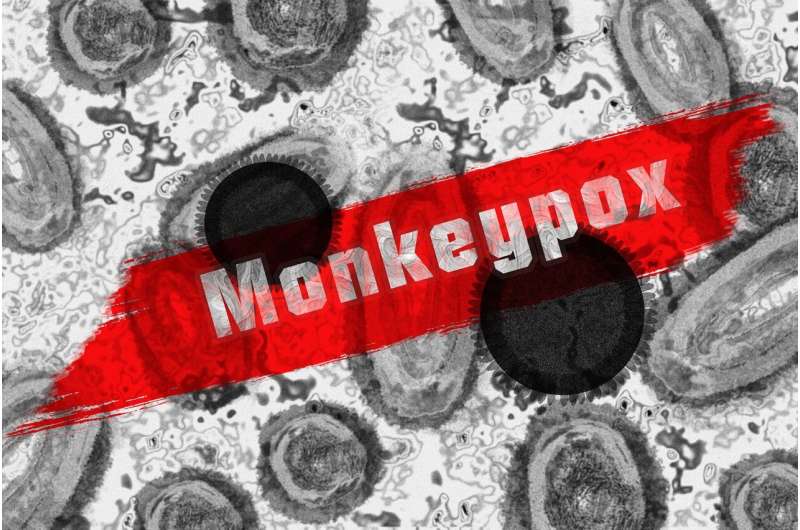Credit: Pixabay/CC0 Public Domain
A team of researchers from the Chinese Academy of Sciences, Tsinghua University and Peking University has determined the holoenzyme structure of monkeypox DNA using cryo-electron microscopy. In their paper published in the journal Science, the group describes the process they used to reveal the structure of the virus DNA and some of the attributes that they were able to see.
They also subtly suggest that such types of research are being taken more seriously in China after the political problems encountered throughout the course of the current pandemic. To that end, the research in this new effort was supported financially by a large number of foundations and institutions in the country, ensuring that the work could be done thoroughly.
Monkeypox is a viral disease that has been found to infect rodents and primates, originally in the rainforests of central and west Africa. Prior research has shown that it is related to smallpox and can be transferred between other primates and humans and from humans to humans. The disease is caused by the monkeypox virus, which is known to have double-stranded DNA.
People with the disease may experience, fever, fatigue, headache, swollen lymph nodes, muscle pain and respiratory symptoms. Severity of symptoms varies between individuals, and in some cases, it can lead to death. In this new effort, as part of a growing worldwide effort to learn more about the virus and develop treatments and vaccines, the researchers studied a certain part of its DNA.
The work involved placing samples of the virus in a cryo-electron microscope and using its features to analyze in high resolution (~2.8 Å) the 3D structure of its polymerase holoenzyme, a part of the DNA structure involved in replication. It has what the researchers describe as a "forward sliding clamp" that is used as a means for replication.
They also found that its means for binding is similar in many respects to the DNA found in other B-family polymerases in other viral species—an indication that there is some degree of conservation in evolution, which could help in developing therapies and vaccines against the virus.
More information: Qi Peng et al, Structure of monkeypox virus DNA polymerase holoenzyme, Science (2022). DOI: 10.1126/science.ade6360
Journal information: Science
© 2022 Science X Network























